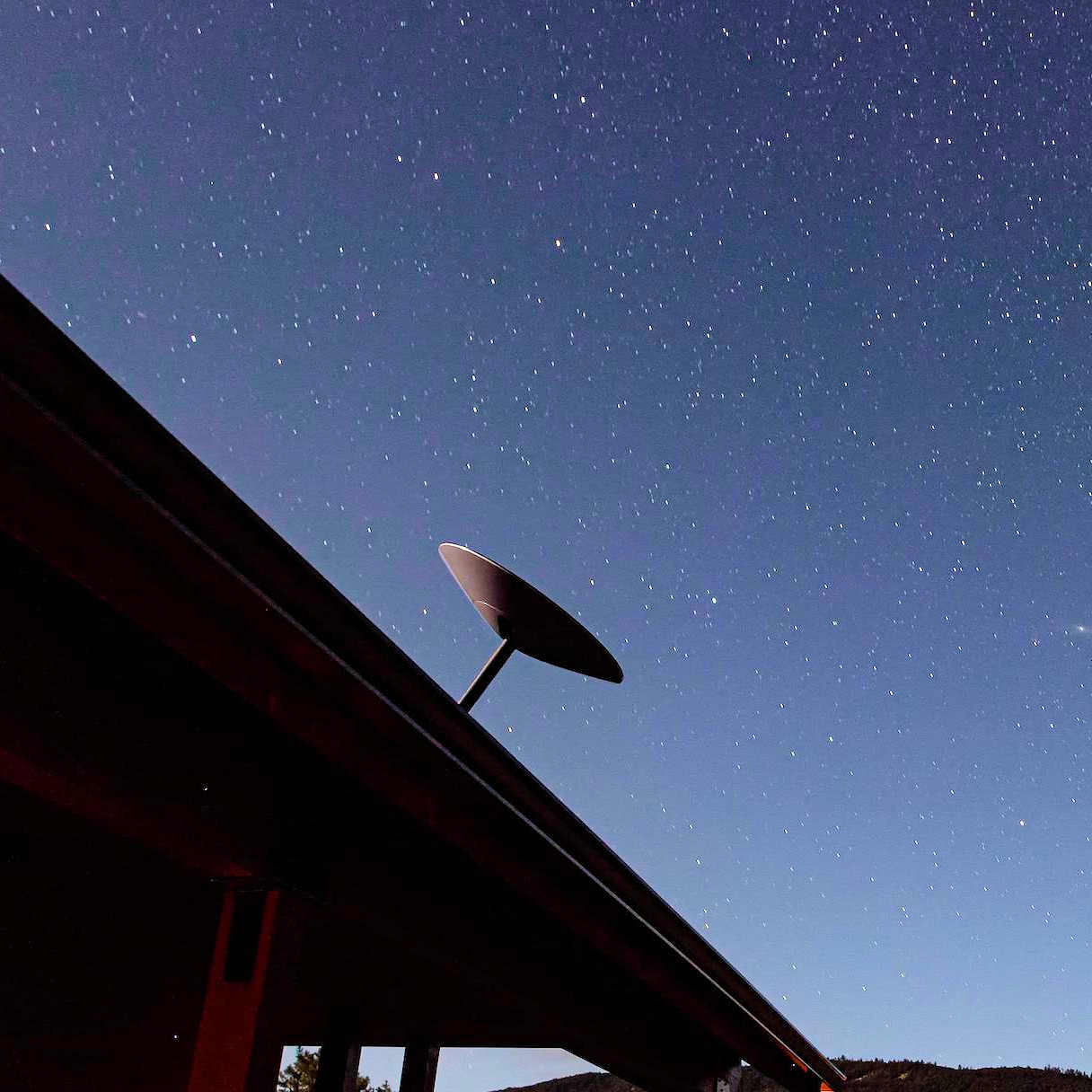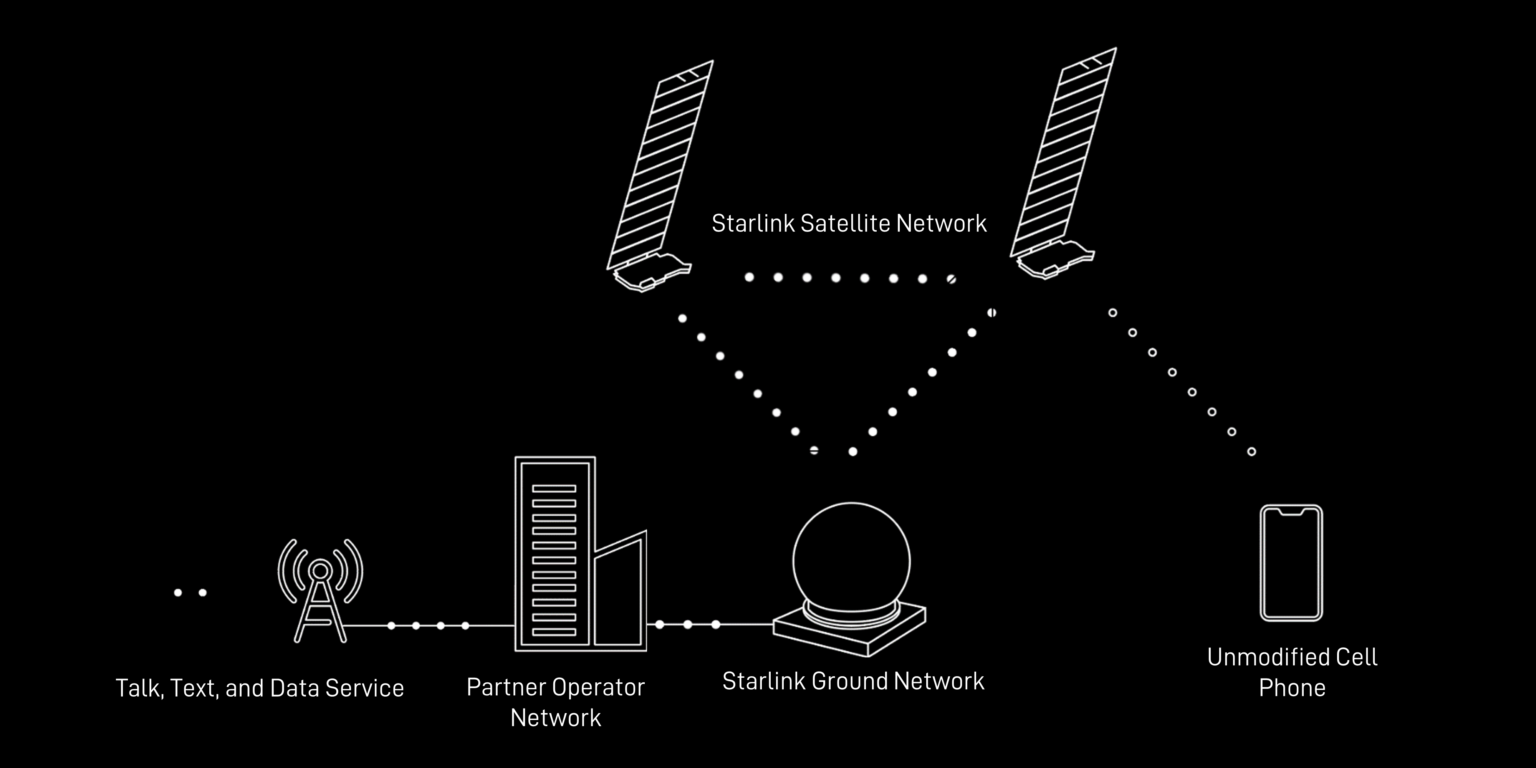
Starlink (SpaceX) has conducted the first successful live test of their new global Direct to Cell mobile roaming service with regular unmodified Smartphones, which came only six days after they launched (here) the first small batch of DtC capable broadband satellites. But at present it’s only being used to send and receive text (SMS) messages.
The operator’s network currently has around 5,311 LEO satellites in orbit around the Earth (altitude of c. 500km+) and they have approval to add roughly 7,500 more by the end of 2027. Customers in the UK pay from £75 a month, plus £449 for the home kit (standard dish, router etc.) and £20 for shipping on the ‘Standard’ package, which promises fast internet latency times of 25-50ms, downloads of c. 25-100Mbps and uploads of c. 5-10Mbps.
NOTE: Starlink’s network current has 2.3 million customers across the world and just 42,000 of those are in the UK (up from 13,000 last year) – mostly in rural areas.
However, since 2022 (here and here) the company has also been busy working to add 4G mobile capability to their mega constellation of global satellites, which will make it possible to setup global roaming style communications with regular unmodified Smartphones on the ground. In the past, most satellite-based phone services were fairly basic and required bespoke and expensive handsets to function.
Satellites with Starlink’s new DtC capability instead have an advanced eNodeB modem onboard that acts like a cell phone tower in space, allowing network integration similar to a standard roaming partner. According to the latest update from Starlink, the first live technical test of this new capability officially took place alongside partner T-Mobile (using some of their radio spectrum frequency) in the USA on Monday 8th January 2024.
The test itself involved the sending and receiving of several text (SMS) messages, which were relayed between an unspecified Smartphone on the ground and their new DtC capable satellites in space.
Starlink Statement
On Monday, January 8, the Starlink team successfully sent and received our first text messages using T-Mobile network spectrum through one of our new Direct to Cell satellites launched six days prior. Connecting cell phones to satellites has several major challenges to overcome.
For example, in terrestrial networks cell towers are stationary, but in a satellite network they move at tens of thousands of miles per hour relative to users on Earth. This requires seamless handoffs between satellites and accommodations for factors like Doppler shift and timing delays that challenge phone to space communications.
Cell phones are also incredibly difficult to connect to satellites hundreds of kilometers away, given a mobile phone’s low antenna gain and transmit power. Starlink satellites with the Direct to Cell payload are equipped with innovative new custom silicon, phased array antennas, and advanced software algorithms that overcome these challenges and provide standard LTE service to cell phones on the ground.
SpaceX aims to launch a constellation of hundreds of DtC capable satellites to enable the launch of their basic text (SMS) service in 2024, with support for voice, data (mobile broadband), and Internet of Things (IoT) services due to follow in 2025 (although it wouldn’t surprise us if this slipped a little).

At present Starlink doesn’t have any mobile operators as partners in the UK, but the list of supporting operators has been slowly growing since the service was first announced. However, we still don’t know how much it will cost to add this kind of global roaming to an existing plan, which will need to be competitive with traditional roaming services if it’s to have any mass market appeal.
Furthermore, Elon Musk recently cautioned (here) that the first DtC capable Starlinks can only support data speeds of “~7Mb per beam and the beams are very big, so while this is a great solution for locations with no cellular connectivity, it is not meaningfully competitive with existing terrestrial cellular networks.”
Related documents released last year revealed that the Direct to Cell system will be able to provide “theoretical peak speeds of up to either” 3Mbps or 7.2Mbps peak upload (Earth-to-Space) over 1.4MHz or 5MHz bandwidth channels per beam, respectively, and up to either 4.4Mbps or 18.3Mbps on the downlink (Space-to-Earth) over the same bandwidth channels per beam using LTE (4G) technology.
In short, this is all about meeting basic communication needs across the globe and in remote areas.










Superb, congratulations